
Hindu Wedding Rituals | images. akm-img-a-in.tosshub.com
Hindu weddings are usually conducted following all the religious and social rituals that Hindus practiced since ancient ages. Most of the vital ceremonies related to a Hindu marriage are mentioned in old religious scriptures, like Vedas and Manu Smriti. However, some social traditions observed in Hindu marriages were created and gradually developed by common people.
A Hindu wedding is considered as the union of two souls for many births, as well as a social union of their families. Thus, all relatives and friends of the bride and groom are invited by sending beautiful Hindu wedding invitations, prepared by reputed wedding card designers. They enjoy a lot while participating in all pre-wedding and post-wedding functions while blessing the new couple. So, all the traditional Hindu wedding rituals are enlisted here, which are diligently conducted in all Hindu marriages.
Engagement – In a Hindu wedding, engagement is different from that of other religions. It is the ceremony when the fathers of the would-be bride and groom announce their unanimous decision to tie the marital knot. Then the bride and groom exchange rings and seek blessings from all elders during this ceremony.
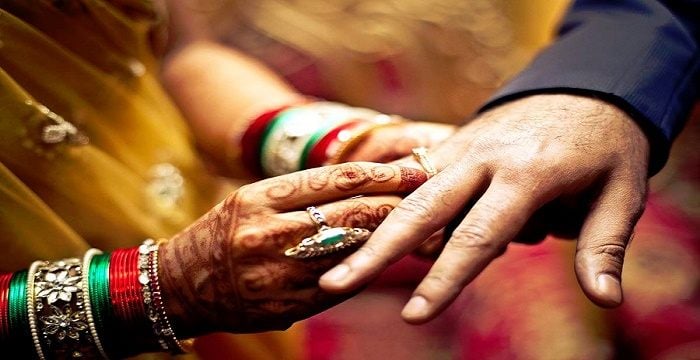
Engagement | images. culturalindia.net
Mehendi – This pre-wedding function is held at the bride’s place. Beautiful geometric or floral designs are made with henna paste on the hands and feet of the bride, as well as her female relatives and friends. People dance, sing, and play dholak or other musical instruments to celebrate this occasion.
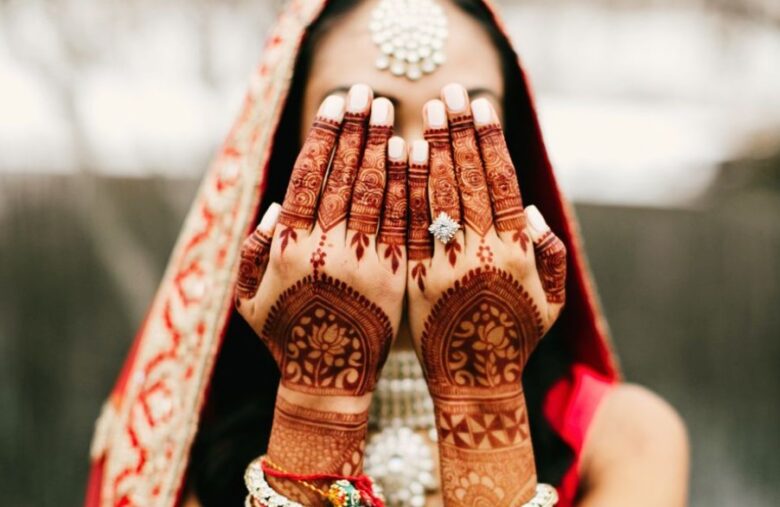
Mehendi
Sangeet – This function is usually held a day before the wedding date and organized by the bride’s family. Family members and friends of both bride and groom join together to sing and dance, to have fun amidst all the tensions of wedding preparation.

<bsangeet< b="">
</bsangeet<>
Tilak – Male family members of the bride visit the groom’s place and bless him by putting a tilak with vermillion on his forehead. They shower him with different kinds of gifts, showing their appreciation of this marriage.

Tilak
Haldi – This pre-wedding function occurs on the morning of the wedding day. The paste of turmeric is applied to the body of the groom and then sent to the bride. She is also smeared with this paste on her face and limbs before taking a bath. It is mainly done to make the new couple look more beautiful though turmeric is believed by Hindus as a powerful thing to ward off evil power.
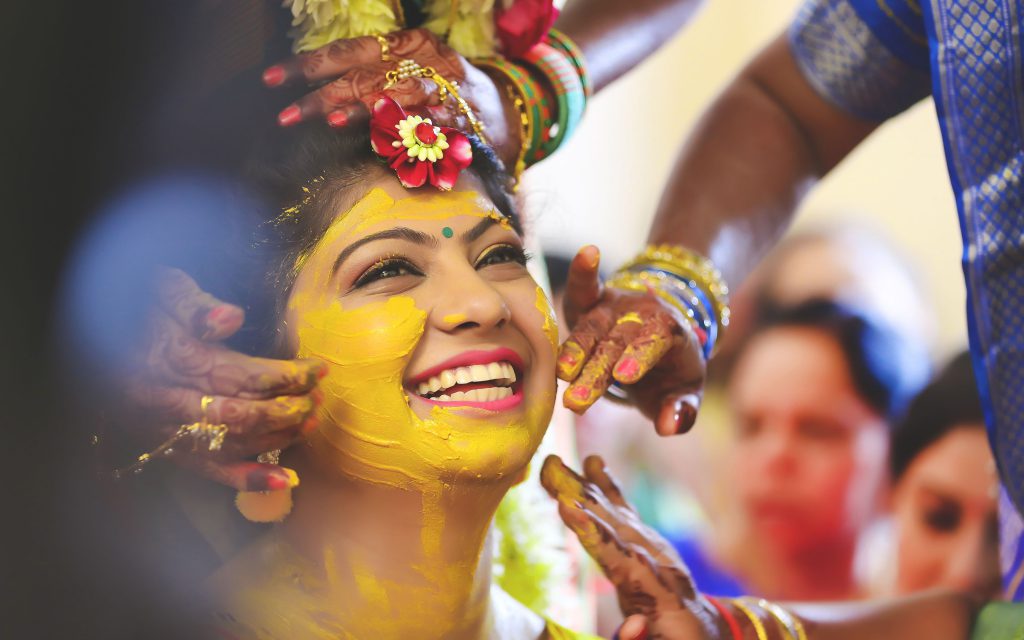
Haldi Ceremony
Baraat – This is the arrival of the groom with a grand procession to the wedding venue. He rides a decorated white mare or a car covered with flowers, accompanied by his family members and friends. They dance and sing with a band party while going towards their destination. Then they are heartily welcomed by the bride’s family upon reaching the wedding venue.

Baraat
Jai Mala – The bride and groom exchange floral garlands thrice, which is a gesture of welcoming each other into their lives. It is the first step of a Hindu marriage ceremony and maybe differently conducted at different parts of India.
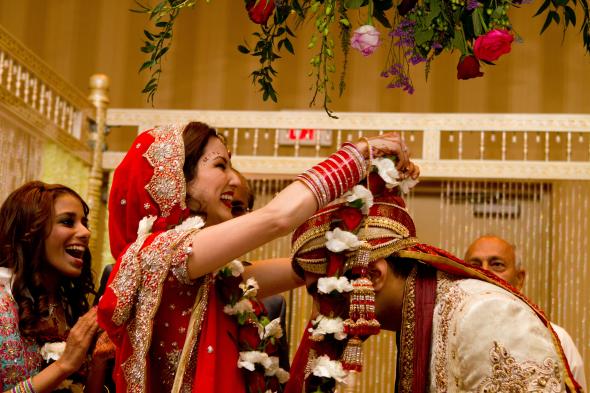
Jai Mala
Kanyadaan – The bride’s father officially gives away his daughter to her groom during this wedding ritual, which is considered sacred in Hindu scriptures. He places her hand into the hand of the groom while the priest chants some Vedic hymns.

Kanyadaan
Saptapadi – A holy fire is lit at the centre of the wedding venue. The corners of the bride’s veil and the groom’s scarf are tied together, signifying the marital bond. Then they walk seven times around this fire, taking some marital vows as mentioned in the Vedas. In some parts of India, the new couple walks seven steps together around the fire, to complete the ritual of Saptapadi.

Saptapadi
Sindoor Daan – Scarlet red or reddish-orange colored vermilion powder is called Sindoor and the groom puts it on the parting of the hair of his bride towards the end of the wedding ceremony. A streak of Sindoor is the mark of a married woman as per Hindu tradition, which she always maintains as long as her husband is alive.
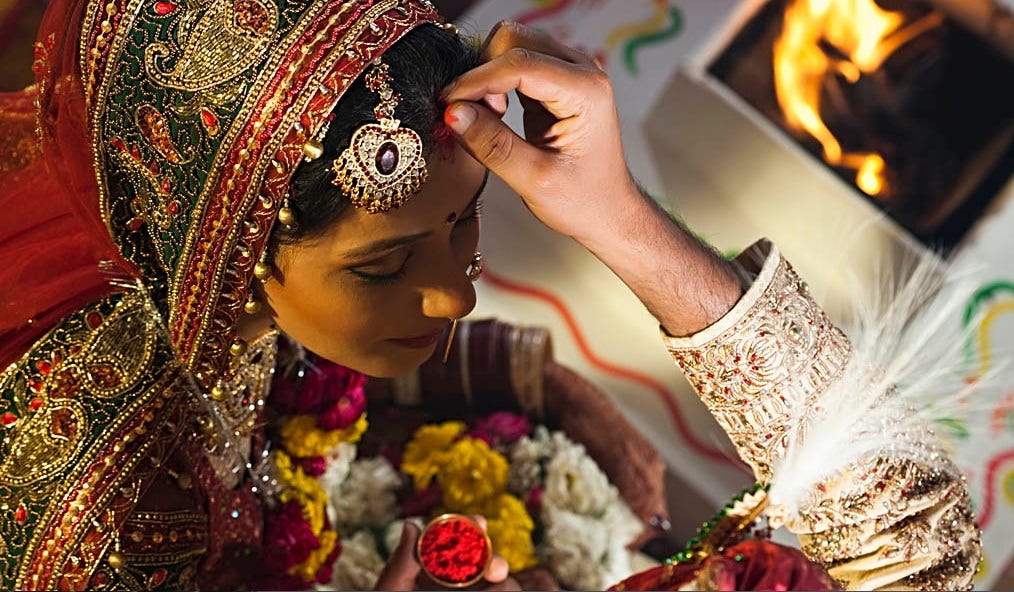
Sindoor Daan
Mangalsutra – A delicate necklace of black and golden beads is called Mangalsutra and it is another auspicious mark of a married woman. The groom ties it around the neck of the bride to complete the Hindu wedding ceremony. It is believed that the bride receives the blessings of Goddess Lakshmi by wearing this Mangalsutra all the time.
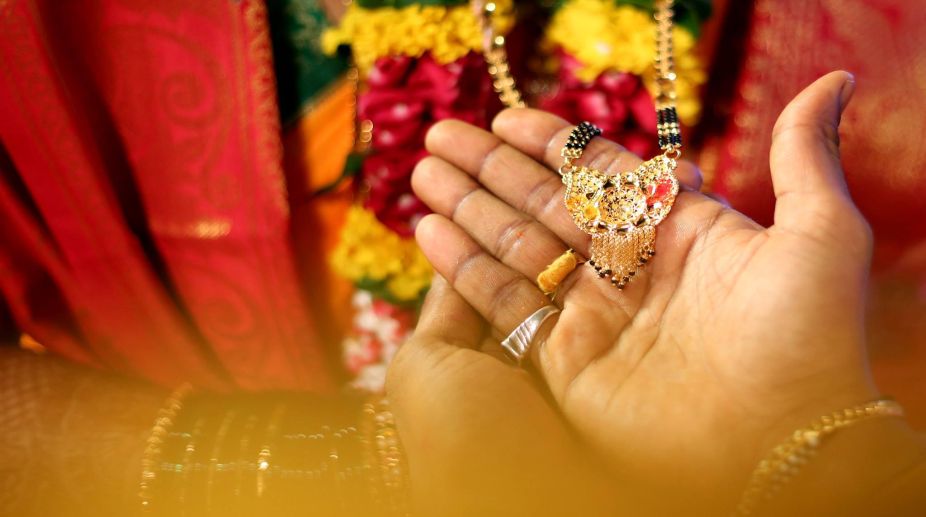
Mangalsutra
Vidaai – This ritual is the official farewell of the bride from her parents’ home. In some parts of India, the bride throws some handfuls of rice backward at her mother. Then she is hugged by all her family members while all feeling too emotional and tearful at this time.
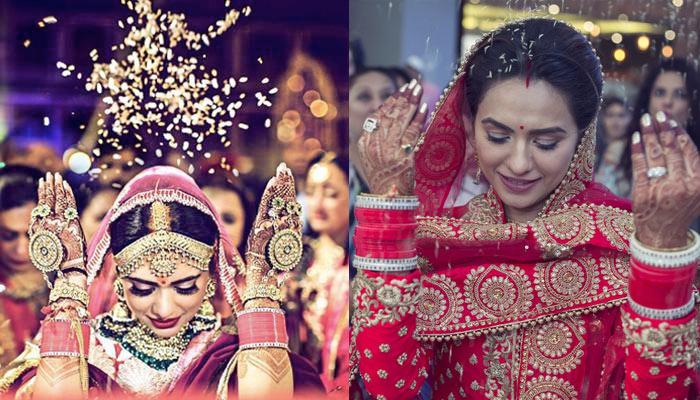
Vidaai
Griha Pravesh – The bride is officially welcomed to her new home by her mother-in-law and other elderly female family members. They conduct the aarti of the new couple with a lamp and other sacred things arranged on a cane tray. Then the bride pushes a jar filled with rice with her right toe while entering the house. In some places, the bride needs to step on a plate filled with a solution of kumkum and water, then walk over a white cloth leaving red footprints behind.

Griha Pravesh
Mooh Dikhai – This ritual is common among North Indians and it is done right after the new couple enters home. The bride is unveiled by her mother-in-law and other elderly ladies. They give her gifts and welcome her to that family.
Reception – This is the grand party thrown by the groom’s family, to introduce the bride to their entire community. It is held 1-2 days after the wedding ceremony and the bride’s family and friends are also invited to join. All guests enjoy music, dance, and a lavish feast after blessing the new couple.
Pag Phera – This is the last ritual of a Hindu wedding where the bride goes back to her parents’ home with her brothers. She can stay there for a maximum of 3 days and then her husband arrives to take her back to her in-laws’ house. Her parents give some gifts to the new couple before they return home.
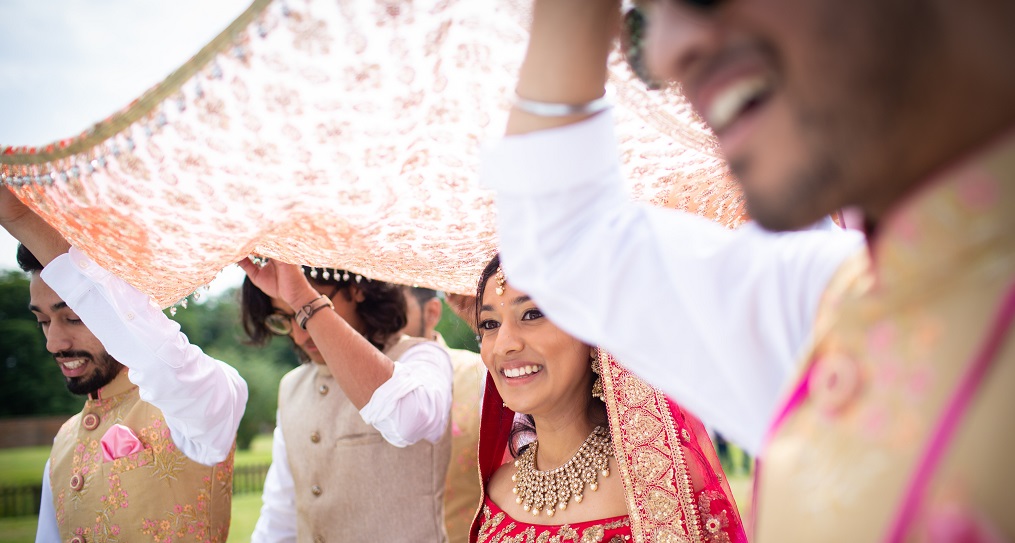
Pag Phera
All these traditions mark a Hindu marriage and people enjoy a lot attending these functions. So, all Hindu wedding invitations have all these functions mentioned with date, time, and venue for the convenience of guests.










The information below is required for social login
Sign In
Create New Account